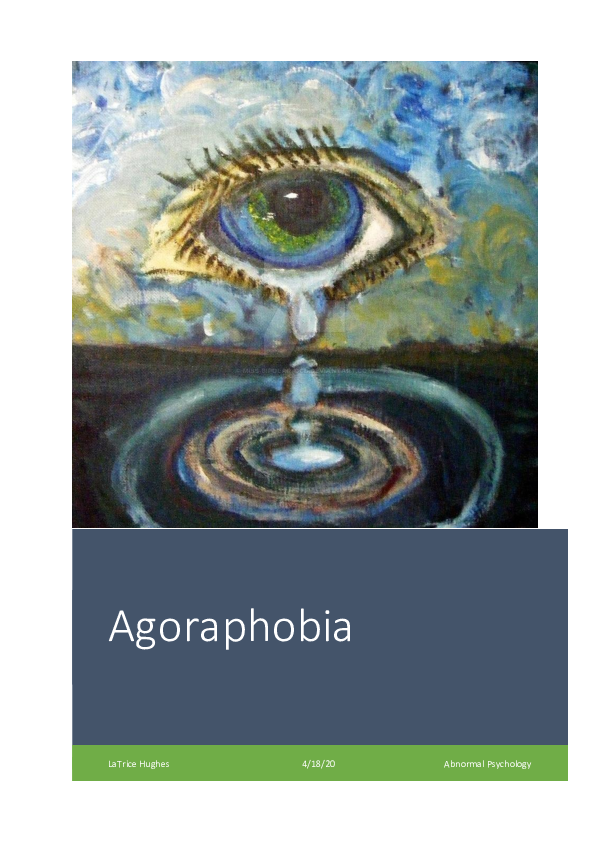Academia.edu no longer supports Internet Explorer.
To browse Academia.edu and the wider internet faster and more securely, please take a few seconds to upgrade your browser.
Agoraphobia
Agoraphobia
2020, Agoraphobia
Fear can sometimes be predicated upon environmental influences. An individual must know why they feel the way they feel, in order to psychologically return to normal.
Related Papers
A Phobia is a type of anxiety disorder defined by a persistent and excessive fear of an object or situation. Phobia typically results in a rapid onset of fear and is present for more than six months. The affected person goes to great lengths to avoid the situation or object, to a degree greater than the actual danger posed. The American Psychological Association (APA) defines anxiety as "an emotion characterized by feelings of tension, worried thoughts and physical changes like increased blood pressure". The current study is pilot research work based on case study and survey method. It studies the relationship between anxiety and phobia and how anxiety is the causal factor in the development of phobia in the age group between 18 to 25 years in Mumbai city. The survey was conducted with the help of a questionnaire. Under the guidance of the Author "Smt. Bhagyashree Kulkarni", the co-authors "Miss. Riddhi Rane" and "Miss. Shruti Pawar" observed that 15% individuals possessed higher anxiety levels, 63% were individuals having moderate anxiety levels and 22% were individuals having lower anxiety levels. Whereas, in the second part of the test i.e. the test for phobia, 12% samples showed severe phobia which indicates that these individuals have a fear of any object or any situation which is so intense that it can have a negative impact on their daily life, 60% samples showed mild phobia which means they have a specific phobia of a specific object or situation that usually poses little or no actual danger. And 28% samples showed no phobia.
European Archives of Psychiatry and Clinical Neuroscience
Finding gene-environment interactions for phobias2008 •
Journal of Psychopathology and Behavioral Assessment
Assessment of fear of fear among Agoraphobic patients: The Agoraphobic Cognitions Scale1992 •
Behaviour Research and Therapy
The fear of fear concept: Stability, retest artefact and predictive power1993 •
RELATED PAPERS
Journal of Linguistic Anthropology
The Arabic Language and National Identity: A Study in Ideology (Yasir Suleiman)2005 •
Nuevos desafios para la educacion superior regional
Unzué, Perrotta comp. (2023), Nuevos desafios para la educacion superior regional Clacso2023 •
Seminar Nasional Aplikasi Teknologi Informasi
Pengoptimalan Software S-Plus Guna Estimasi Model Regresi Untuk Data Dengan Kesalahan Pengukuran Menggunakan Metode Bayes2012 •
Light: Science & Applications
High resolution multispectral spatial light modulators based on tunable Fabry-Perot nanocavitiesJOURNAL OF ANCIENT HISTORY AND ARCHAEOLOGY
A Sarmatian Horse-Rider at the Court of the Dacian Kings. The Sign (II)1995 •
Canadian Respiratory Journal
Estimates of Prevalence of Pulmonary Hypertension according to Different International Definitions2021 •
2016 •
Pesquisas em Teologia
Leodegária de Jesus: entre a decolonialidade e a religiosidade2023 •
RELATED TOPICS
- Find new research papers in:
- Physics
- Chemistry
- Biology
- Health Sciences
- Ecology
- Earth Sciences
- Cognitive Science
- Mathematics
- Computer Science

 LaTrice Hughes
LaTrice Hughes